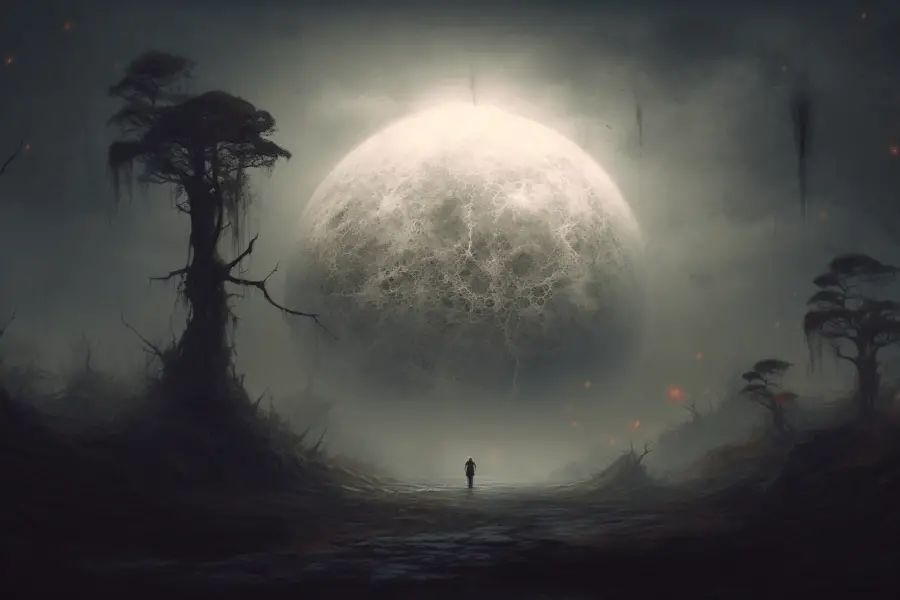Share the Lore!
By: Sid Meyers
The Supernatural Significance of the Moon: Exploring its Role in Spirituality
What does the moon mean to you? As a fixture in our night sky, let’s explore the mysterious qualities that have mystified us all throughout human history.
When we think of the moon, we may immediately picture a glowing sphere in the night sky. But beyond its scientific qualities, the moon has long been a symbol of mysticism and magic in various spiritual practices around the world. From ancient cultures to modern-day beliefs, the moon’s supernatural significance has captured the imaginations of many.
In this article, we’ll take a closer look at the moon’s role in different spiritual traditions and the beliefs that surround it. So, let’s journey through the cosmic world of the moon and explore its mystical significance in spirituality.
The Moon in Wicca and Witchcraft
The moon holds great significance in Wicca and witchcraft, with many practitioners using the lunar cycle to guide their spiritual practices. Here are some interesting aspects of the moon’s role in Wicca:
Beliefs surrounding the lunar cycle in Wicca
In Wicca, the lunar cycle is divided into eight phases, with each phase having its own unique energy and magical correspondences. The phases of the moon are viewed as symbolic of the journey of the Goddess, who is believed to be reborn with each new moon and reach her peak of power at the full moon.
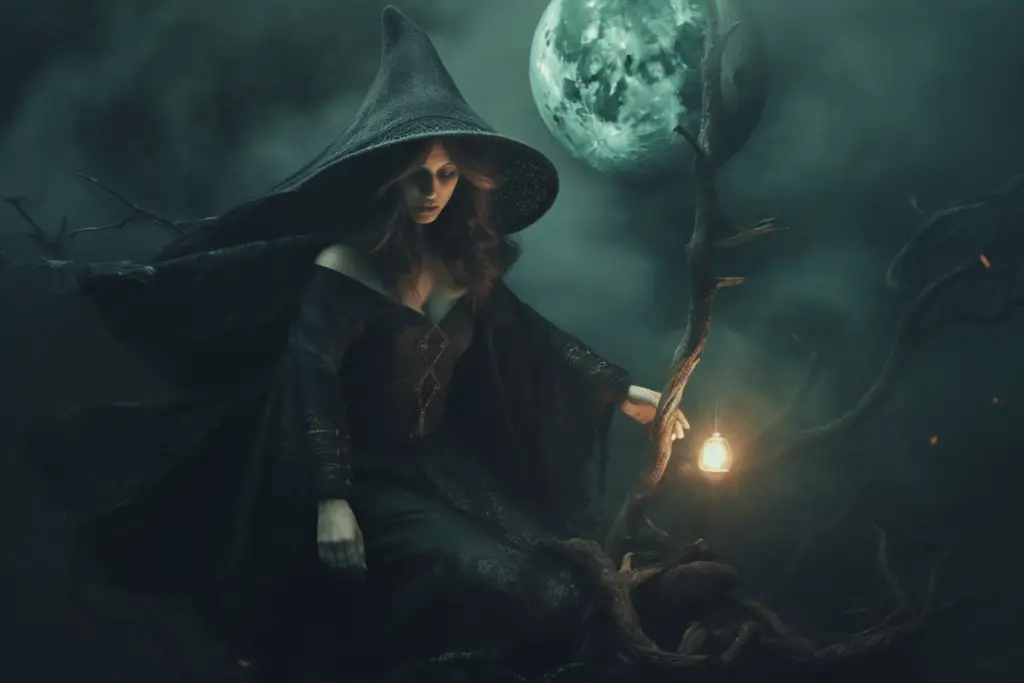
Rituals and practices associated with the full moon and new moon
The full moon and new moon are considered to be the most potent times for magic in Wicca. Full moon rituals often involve honoring the Goddess and performing spells for abundance, manifestation, and protection. New moon rituals, on the other hand, are focused on new beginnings, releasing old patterns, and setting intentions for the upcoming lunar cycle.
Significance of moon phases in spellwork
Wiccans and witches often use the energy of the moon phases to enhance their spellwork. For example, spells for banishing negativity or releasing bad habits are often performed during the waning moon, while spells for love and manifestation are typically performed during the waxing moon. The full moon is considered to be a time of great power, making it an ideal time for high-level spellwork.
Fun Fact: Moonquakes: Just like Earth experiences earthquakes, the Moon experiences moonquakes. These quakes are caused by tidal forces exerted by the gravitational pull of Earth and the gravitational interactions with the Sun.
The Moon in Paganism
Paganism is a broad term that encompasses a diverse range of spiritual practices, many of which place significant importance on the moon. Here are some fascinating facts about the moon’s role in paganism:
The Role of the Moon in ancient pagan traditions
1. Moon Goddesses: In many ancient pagan cultures, the moon was associated with a goddess, who was believed to control the rhythms of nature and the cycles of life and death. Examples of moon goddesses include the Greek goddess Selene, the Roman goddess Luna, and the Egyptian goddess Isis.
2. Lunar Calendars: Many pagan cultures used lunar calendars to track the passage of time, rather than the solar calendars used in modern times. These calendars were based on the phases of the moon, with each lunar month beginning with the new moon and ending with the full moon.
The connection between moon phases and the wheel of the year
1. The Wheel of the Year: The Wheel of the Year is a pagan calendar that tracks the changing of the seasons and the cyclical nature of life. It consists of eight holidays, or sabbats, that are based on the solstices, equinoxes, and the midpoint between these points. Each of these holidays is associated with a specific phase of the moon, such as the full moon at Beltane or the new moon at Samhain.
2. Esbats: In addition to the sabbats, pagans also celebrate the phases of the moon through rituals known as esbats. These rituals are held at the full moon and the new moon and are often focused on personal growth, healing, and spiritual development.
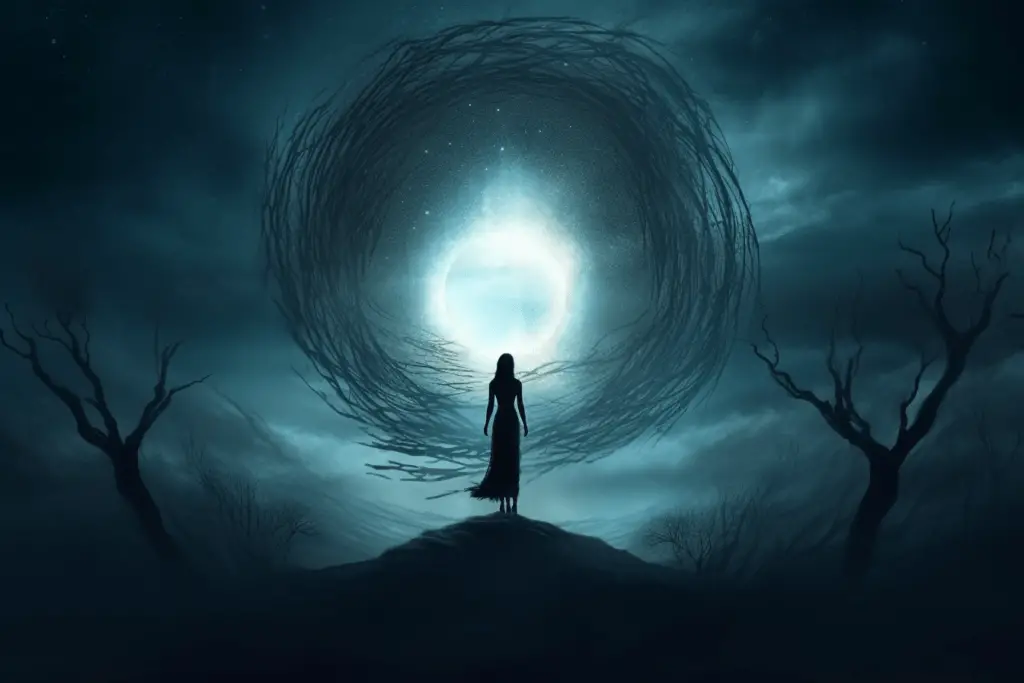
Moon worship in different pagan cultures
1. Druids: In ancient Celtic culture, the moon was associated with the Druids, who were believed to have mystical powers and could communicate with the spirits of nature. The Druids also used the phases of the moon to predict the weather and to determine the best times for planting and harvesting crops.
2. Native American: Many Native American tribes also placed great importance on the moon, which was believed to have a powerful influence on the natural world. Some tribes believed that the moon was inhabited by spirits or that it controlled the tides and the movements of animals.
Fun Fact: Slowly Drifting Away: The Moon is gradually moving away from Earth at a rate of about 3.8 centimeters (1.5 inches) per year. Over millions of years, this movement will have significant effects on Earth's tides and length of day.
The Moon in Hinduism
In Hinduism, the moon is an important celestial body that is steeped in mythology and religious significance. Here are some interesting facts about the moon in Hinduism:
Importance of the Moon in Hindu Mythology and religious practices
In Hindu mythology, the moon is known as “Chandra,” and is believed to be the son of the sage Atri and his wife Anasuya. According to legend, the moon god is also known as “Soma,” and is considered to be a powerful deity associated with immortality, fertility, and love.
The moon is also an important symbol of Lord Shiva, one of the most revered gods in Hinduism. Lord Shiva is often depicted with a crescent moon on his forehead, which is believed to represent the cycles of time and the continuity of creation.
Role of the Moon in Hindu Calendars and Festivals
The Hindu calendar, or “Panchang,” is based on the cycles of the moon and is used to determine important dates for religious festivals and rituals. The lunar calendar is divided into 12 months, with each month beginning with the new moon and ending with the full moon.
One of the most important Hindu festivals that are associated with the moon is “Karwa Chauth,” which is celebrated by married women who fast from sunrise to moonrise for the safety and longevity of their husbands.
Lunar deities and their significance in Hinduism
In Hinduism, there are several lunar deities who are associated with the moon and its cycles. One of the most popular lunar deities is “Chandra,” which is believed to have a soothing and calming effect on the mind and body. Another important lunar deity is “Soma,” which is associated with immortality and the elixir of life.
The moon is also an important symbol of the divine feminine in Hinduism and is associated with the goddesses Parvati, Kali, and Durga. These goddesses are often depicted with the crescent moon on their foreheads, which is believed to represent their divine power and beauty.
Fun Fact: Lunar Swirls: The Moon is adorned with mysterious patterns called lunar swirls. These are bright, swirling patterns on the Moon's surface, often found near large impact craters. Their exact origin and formation are still not fully understood.
The Moon in Native American Spirituality
Native American spirituality holds the moon in high regard, with many tribes associating it with the feminine, fertility, and life-giving properties. Here are some fascinating beliefs and rituals surrounding the moon in Native American traditions:
Beliefs and rituals surrounding the Moon in Native American Traditions
1. The Lakota Sioux tribe considers the moon as a powerful force that can affect the lives of individuals and communities. They believe that the moon influences the tides, emotions, and the growth of plants and animals.
2. The Navajo tribe associates the moon with cycles of birth, growth, death, and rebirth. The phases of the moon are believed to be a reflection of these cycles, with the full moon representing the peak of energy and power.
3. The Hopi tribe holds the moon as a sacred symbol of life and feminine energy. They believe that the moon is a protector and nurturer, helping to guide individuals on their spiritual journeys.
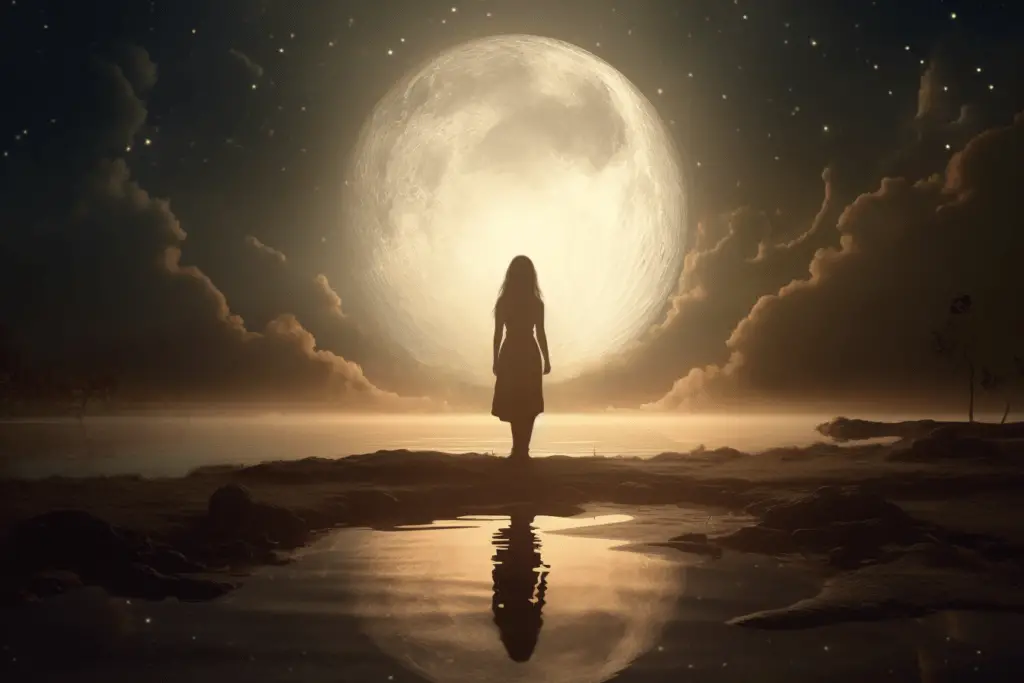
The Connection between Moon Phases and Natural Cycles
1. The Cherokee tribe associates the full moon with the arrival of spring and the planting of crops. They call the full moon in March the “Wind Moon,” signaling the start of warmer weather and the awakening of the natural world.
2. The Ojibwe tribe recognizes 13 lunar months, each named after a significant event in nature such as the “Sugar Moon” or the “Hunter’s Moon.” The lunar calendar is used to mark the changing seasons and to plan ceremonial and hunting activities.
The Symbolism of the Moon in Native American Mythology
1. In many Native American creation myths, the moon is seen as a powerful and influential force that helps to create and sustain life. For example, the Zuni tribe tells the story of the moon and sun, who come together to create the first humans.
2. The Mohawk tribe believes that the moon is a symbol of feminine energy and a powerful force for healing. They hold moon ceremonies to honor the female aspects of life and to promote balance and harmony in the community.
Cultural Significance of the Moon in Chinese Folklore
In Chinese folklore, the moon is associated with various myths and legends. One such story is the tale of Chang’e, the moon goddess who drank the elixir of immortality and ascended to the moon, where she lives with the Jade Rabbit. The story of Chang’e is often told during the Mid-Autumn Festival, a festival celebrating the full moon.
Lunar Calendar and Festivals in Chinese Culture
In Chinese culture, the lunar calendar is used alongside the solar calendar, and many festivals are celebrated based on the lunar cycle. The most famous lunar festival is the Mid-Autumn Festival, also known as the Moon Festival, which takes place on the 15th day of the 8th lunar month. During the festival, people gather together to admire the full moon, eat mooncakes, and participate in other traditional activities.
Influence of the Moon on Chinese Astrology
In Chinese astrology, the moon is one of the five elements, along with wood, fire, earth, and metal. Each element is associated with a different zodiac animal and has specific characteristics and qualities. The moon is also associated with yin energy, which is feminine, receptive, and intuitive.
Fun Fact: Mascons: The Moon has regions called mass concentrations or "mascons" that create gravitational anomalies. These mascons result in variations in the Moon's gravitational pull, which were first discovered during the Apollo missions.
The Moon in Astrology
Astrology is a field that has long held the moon in high esteem. As the closest celestial body to Earth, the moon has a significant impact on our lives and inner selves. Here are some interesting ways that astrology views the moon:
Zodiac Signs Associated with the Moon
Each of the twelve zodiac signs is associated with a ruling planet or luminary, and for Cancer, the moon is the ruler. Cancer, the fourth sign of the zodiac, is known for being emotional, nurturing, and intuitive – qualities that are said to be connected to the moon’s influence.
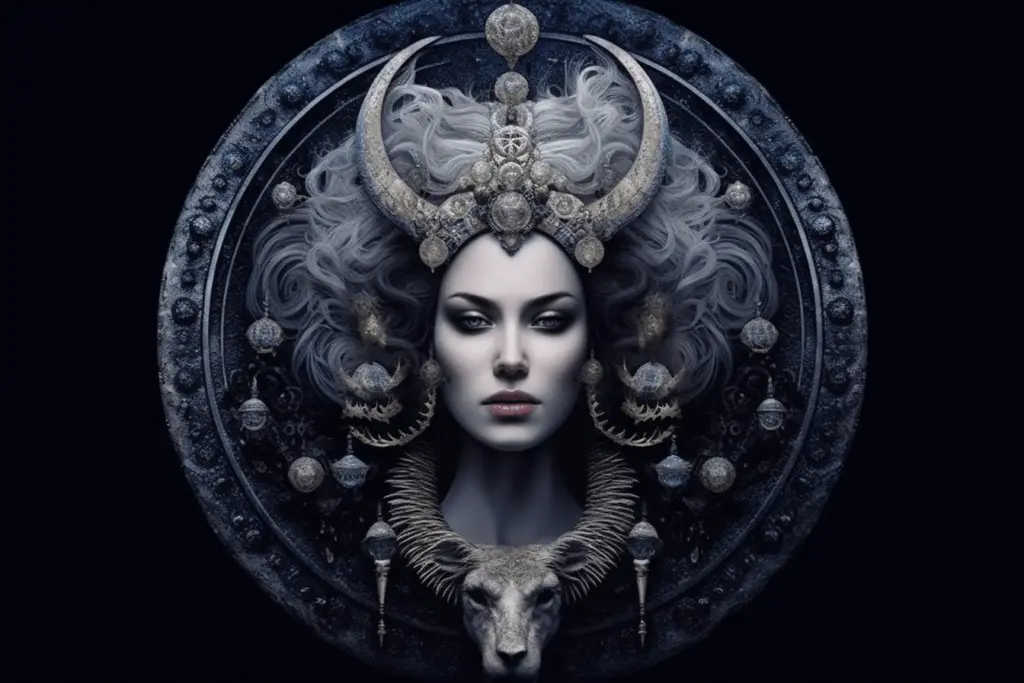
The Moon’s Influence on Emotions and Inner Selves
Astrologers believe that the moon influences our emotions and inner selves, as well as our physical bodies. The moon is associated with our instincts, moods, and subconscious desires. In astrology, the moon represents the inner child, the part of ourselves that is emotional, intuitive, and in need of nurturing.
Significance of the Full Moon and New Moon in Astrology
The full moon and new moon are both significant events in astrology, each with its own unique energy. The full moon is seen as a time of culmination, completion, and release, while the new moon is viewed as a time of new beginnings and planting seeds for the future.
The full moon is associated with heightened emotions and a time of letting go of what no longer serves us, while the new moon is a time of setting intentions and focusing on what we want to manifest in our lives. Many people use these lunar events to perform rituals, meditate, and connect with the moon’s energy.
The moon has been a symbol of mystery and magic since the beginning of human history. Throughout the ages, it has been revered as a powerful force in spirituality and culture, inspiring myths and legends across the globe. In this article, we have explored the supernatural significance of the moon in different spiritual practices and discovered how it has influenced human belief systems throughout history.
Conclusion
From ancient pagan traditions to modern astrology, the moon has held an important place in many spiritual practices. Its phases have been associated with different emotions, energies, and manifestations, making it a valuable tool for ritual and spellwork. Lunar festivals and calendars have also been developed across cultures, emphasizing the moon’s role in natural cycles and seasonal celebrations.
Despite the cultural and historical differences in the interpretation of the moon’s significance, there is a sense of universality in the symbolism it embodies. The moon is a reminder of the ebb and flow of life, the cyclical nature of the universe, and the perpetual renewal of energy and growth.
The mystical power of the moon is a testament to the enduring human fascination with the cosmos and the supernatural. Its influence on spiritual practices across cultures and history reminds us of the interconnectedness of humanity and the natural world.
References:
- – “Astrology: The Ultimate Guide to Understanding Zodiac Signs, Horoscopes, and Astrology” by Julia Steyson
- – “The Complete Guide to Astrology: Understanding Yourself, Your Signs, and Your Birth Chart” by Louise Edington.
- – “The Moon in Chinese Mythology.” China Highlights, 20 Aug. 2019, www.chinahighlights.com/travelguide/chinese-zodiac/moon-in-chinese-culture.htm.
- – “Chinese Moon Festival.” Chinese American Family, 14 Sept. 2019, chinesefamily.com/chinese-moon-festival.htm.
- – “Chinese Astrology.” TravelChinaGuide.com, www.travelchinaguide.com/intro/astrology/.
- – “Native American Moon Mythology.” Native Languages of the Americas, native-languages.org/moon.htm.
- – “Native American Lunar Mythology.” Inquiries Journal, inquiriesjournal.com/articles/738/native-american-lunar-mythology.
- – “The Moon in Native American Culture.” Moon Connection, moonconnection.com/native-american-moon-names.phtml.
- – “The Role of the Moon in Hinduism” by Subhamoy Das, Learn Religions
- – “The Hindu Calendar – Panchanga” by Subhamoy Das, Learn Religions
- – “Chandra, the Moon God” by Subhamoy Das, Learn Religions
- – “The Complete Idiot’s Guide to Wicca and Witchcraft” by Denise Zimmermann and Katherine Gleason
- – “Paganism: An Introduction to Earth-Centered Religions” by River Higginbotham and Joyce Higginbotham
- – “The Power of the Moon: Understanding and Using Lunar Energies” by Sabrina Espiritu
- – Buckland, Raymond. Buckland’s Complete Book of Witchcraft. Llewellyn Publications, 2010.
- – Cunningham, Scott. Wicca: A Guide for the Solitary Practitioner. Llewellyn Publications, 2004.
